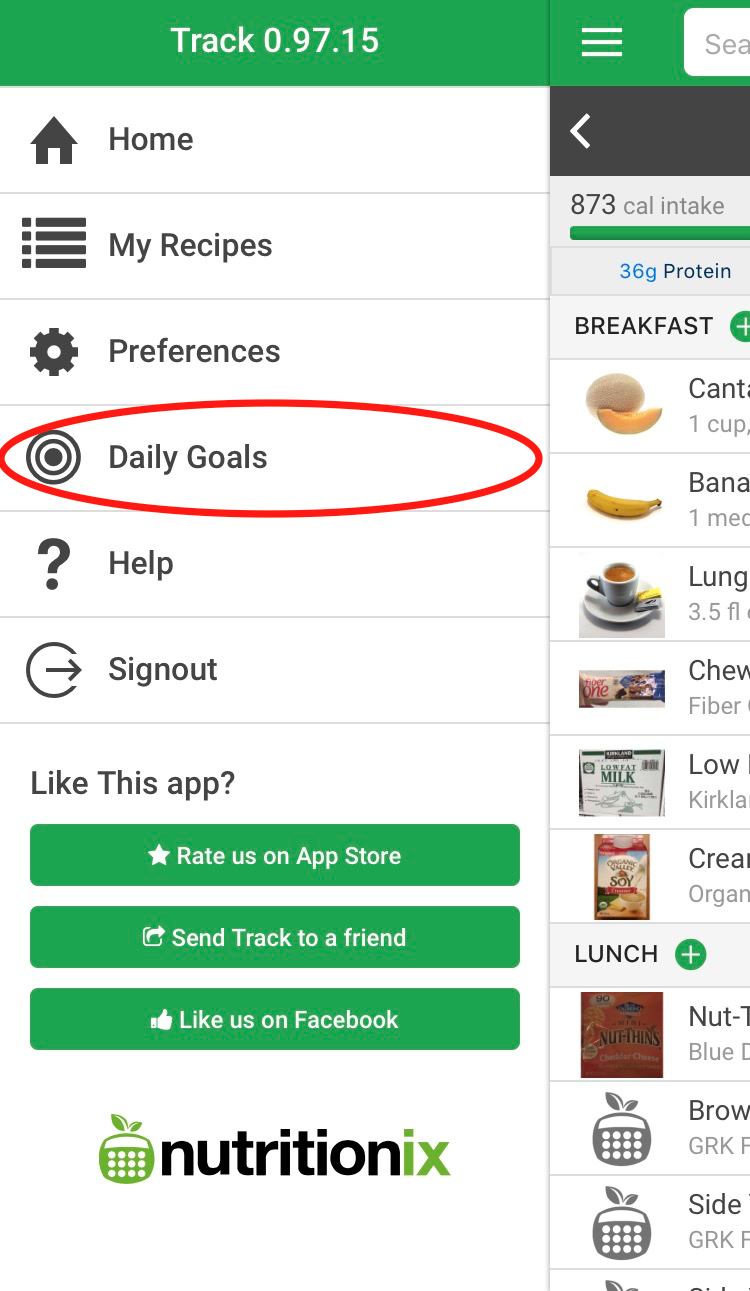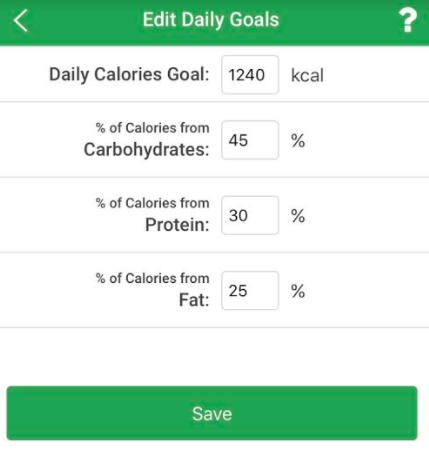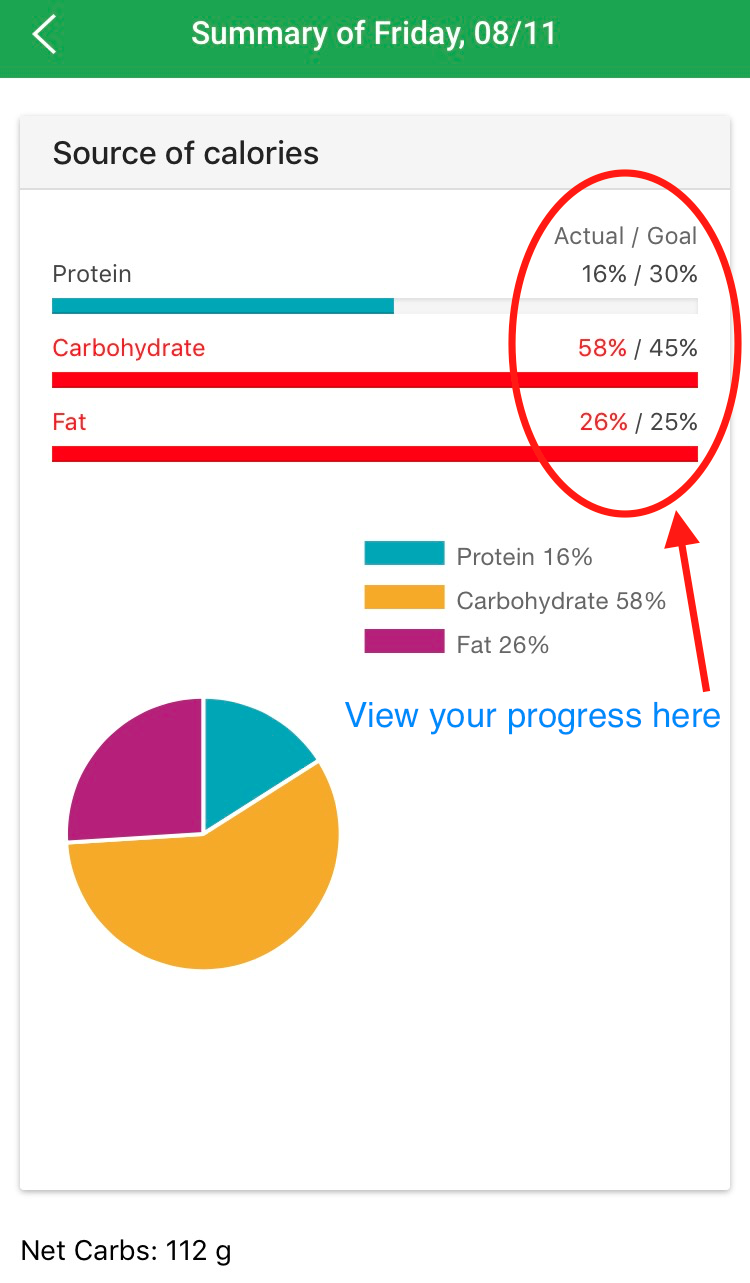Q: What are macro goals and how do I use them in Track?
A: Have you set your Daily Calorie Goal yet? Learn more here!
What are macros? 'Macros' is short for macronutrients, and these include fat, protein, and carbohydrates. All three types of macronutrients provide calories -- or energy -- and are needed for a healthy diet. (Alcohol is a macronutrient too, but you don't need it to stay healthy).
With the new macro goals, you’ll be able to set what percent of your calories you want to come from fat, protein and carbohydrates (if you are setting goals for all three macronutrient categories, make sure they add up to 100%).
To help get you started on coming up with your macro goals, here are the ranges recommended by the USDA:
Carbohydrates: 45-65% of total calories
Protein: 10-35% of total calories
Fat: 20-35% of total calories
As you track your food, you’ll see if you are hitting your goals. You can look at your macro goals by meal or by clicking into your daily summary:
To help you make the most of your macros, choose fiber-rich fruits, vegetables and whole grains, low-fat dairy, lean meats and healthy fats like those found in vegetable oils and nuts!
If you are looking to lose weight, you might consider increasing the amount of protein and decreasing the amount of carbohydrate and/or fat in your diet. Our dietitians recommend the following ranges for optimal weight loss:
Carbohydrates: 40-45% of total calories
Protein: 25-30% of total calories
Fat: 25-30% of total calories
While making modest changes to macronutrient intake is appropriate for most people, always consult with your doctor before making significant dietary changes, especially if you have medical concerns.
For more information on macros, visit the USDA's library on macronutrients
For more information on a healthy diet, visit ChooseMyPlate.gov and US Dietary Guidelines for Americans


